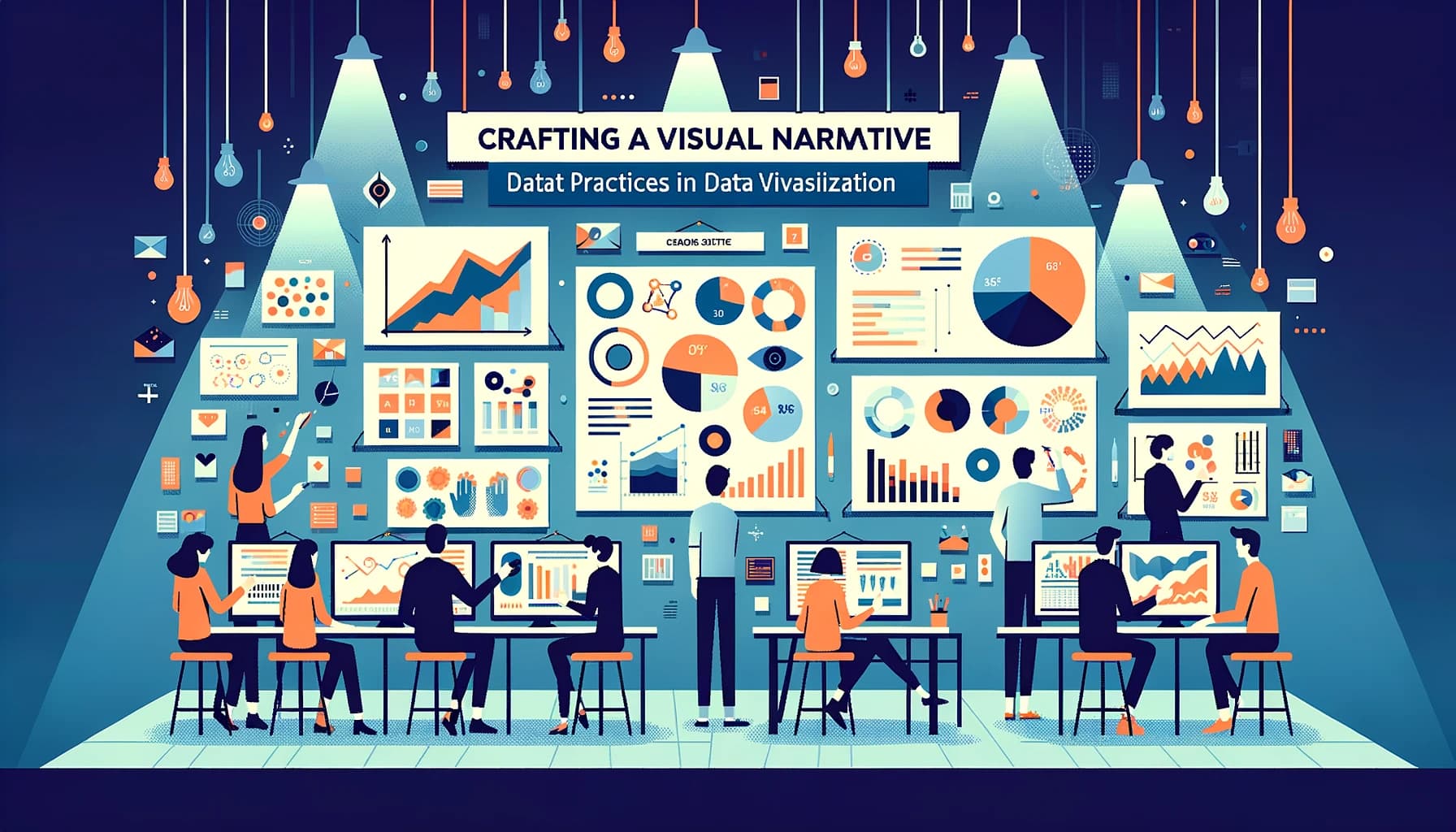Introduction
In the digital age, data is abundant but making sense of this vast information is a challenge. Data Visualization is the beacon that guides us through this dense forest of data, converting complex datasets into understandable, clear, and actionable visual narratives. This article delves into the best practices in data visualization that enable the crafting of compelling visual narratives, making complex data more accessible and insightful.
1. Understand Your Audience
Knowing the audience’s level of understanding and what they seek from the data visualization is crucial. Tailor the visuals to meet the audience’s needs and expectations.
2. Choose the Right Chart Type
Different chart types serve various purposes:
- Bar charts for comparing categories
- Line charts for trends over time
- Pie charts for part-to-whole relationships
# Example: Creating different types of charts using Matplotlib in Python
import matplotlib.pyplot as plt
# Data
categories = ['Category A', 'Category B', 'Category C']
values = [4, 7, 1]
# Bar Chart
plt.bar(categories, values)
plt.title('Bar Chart Example')
plt.show()
# Line Chart
plt.plot(values)
plt.title('Line Chart Example')
plt.show()
# Pie Chart
plt.pie(values, labels=categories, autopct='%1.1f%%')
plt.title('Pie Chart Example')
plt.show()3. Use Color Wisely
Color can emphasize, highlight, and make data visualization more understandable. However, misusing color can confuse the audience.
4. Maintain Simplicity
Avoid overloading the visualization with too much information. A clean, simple design often communicates the message more effectively.
5. Make It Interactive
Interactive visualizations allow the audience to explore data, enhancing engagement and understanding.
# Example: Creating an interactive plot using Plotly in Python
import plotly.express as px
import pandas as pd
# Sample data
df = pd.DataFrame({'x': [1, 2, 3, 4], 'y': [10, 11, 12, 13]})
# Interactive plot
fig = px.line(df, x='x', y='y', title='Interactive Line Chart Example')
fig.show()6. Tell a Story
A good visualization tells a story, conveying the key messages and insights in a compelling and engaging manner.
7. Use Annotations
Annotations help explain unusual data points or trends, providing context for the audience.
8. Conclusion
Crafting a visual narrative requires a blend of creativity, data understanding, and adherence to best practices in data visualization. By following these best practices, one can significantly enhance the ability to communicate complex data insights in an engaging and insightful manner.
